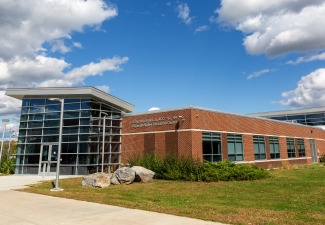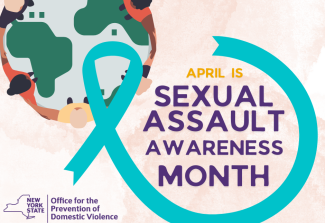‘Party’ Creates Blueprint for Diversity, Equity and Inclusion Work on SUNY Plattsburgh Campus
The framework for SUNY Plattsburgh’s next diversity, equity and inclusion plan was laid down Oct. 29 when nearly 100 campus faculty and staff members gathered for a “Blueprint Party.”
“Creating a plan for inclusive excellence is not something done alone by a vice president or a select team,” said Dr. Michelle Cromwell, vice president for diversity, equity and inclusion in her campus invitation to the gathering. “It is an ‘all in’ effort that requires many hands and voices. We need you here as we begin a process of forging, learning and joining together. This is how work permeates our institution in ways that are genuine and effective.”
Staff and faculty gathered in the Warren Ballrooms for an afternoon of discussion, sharing and brainstorming, sitting together in circles that Cromwell said is the best way to “create the space for people to turn to each other.”
‘Listening Tour’
“The idea for the Blueprint Party came from the understanding that in the first 90 days, I needed to give community members a sense of the work entailed,” she said. Cromwell was hired during the summer and immediately began what she calls her “listening tour” of campus. “The archetype of the circle allows for collaborative dialogue and presents opportunities to see each other in new says.”
The name, “Blueprint Party,” communicated “what we were planning to do, which was to set the blueprint for our diversity, equity and inclusion work,” Cromwell said.
Deb Brunner, media operation technician on campus, appreciated the collaborative nature
of the event.
“I enjoyed that the groups were deliberately broken down so that there were faculty and staff from various divisions and departments having this conversation,” Brunner said. “What it showed me was that there are a number of folks on campus who are willing to engage and keep the conversation moving forward.”
Cromwell concurred.
“To collaboratively create a plan for inclusive excellence, people had to see that we needed an ‘all in’ effort,” she said.
Among the words participants used to describe their “take-aways” were:
- Community
- Trust
- Change
- Openness
- Commitment
- Collaboration
- Communication
- Growth
- Empathy
- Support
Dr. John Locke, coordinator of technology-enhanced learning on campus, said he was encouraged “to witness my colleague’s compassion and concern.”
‘Reassuring’
“It was reassuring to realize that while alone, we have more questions than answers,” he said. “Working together, we may find ways to make meaningful progress toward a more inclusive and equitable community.”
“I think the Blueprint event was important for several reasons,” said Dr. John McMahon, assistant professor in political science. “It asked participants to look critically at the institution's past and present for the obstacles, reluctance, and hesitation to deeply address diversity and equity and also to think critically and collaboratively for a future-oriented vision.
“The faculty and staff session enabled us to have intentional dialogue across different positions on campus and different intersectional identities, and my hope is that this more organic approach helps generate guiding principles for the campus' work,” he said.
First Step
Cromwell hopes to use the ideas that came out of the afternoon’s exercises “to begin constructing our diversity, equity and inclusion strategic plan and to use this as a first step, to invite the community back in to begin putting the plan into action,” she said.
As such, the next step is to “focus on educational and community-building initiatives that intentionally move the institutional culture from just focusing on representation to valuing the experiences and contributions of all community members while addressing the root causes of inequity,” she said. “This will begin with a campus-wide climate assessment that will inform what types of initiatives we should first focus on.”
News
SUNY Plattsburgh, NCCC Announce New Admissions Initiative

SUNY Adirondack Students Benefit from New Dual Agreement with SUNY Plattsburgh Queensbury

SUNY Recognizes Two Plattsburgh Seniors for Excellence in Academics, Leadership
